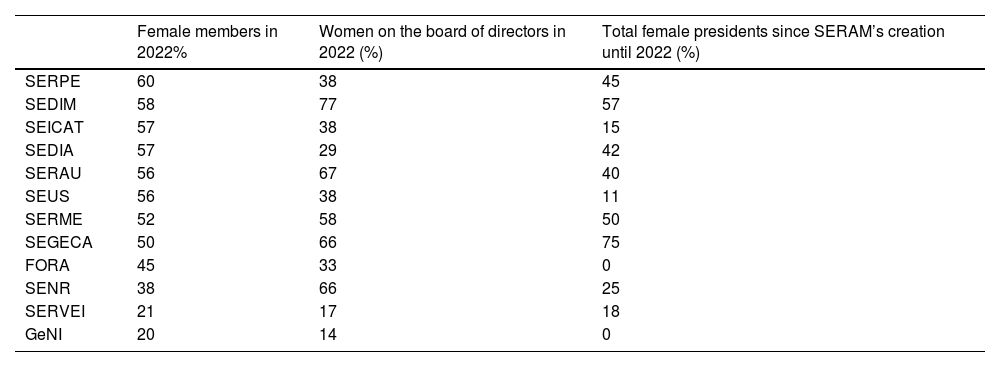There are gender inequalities in all fields, including radiology. Although the situation is improving, the presence of radiologists in leadership positions continues to be a minority. The objective of this article is to analyse the situation of women in the spanish radiology, comparing it with Europe and the United States.
Materials and methodsWe selected the years 2000-2022 as reference period to make a comparison with feminization data throughout history. In addition, relevant specific data from the just begun 2023 were also included.
The variables in which we investigated feminization were the following: medical students, medical graduates, radiology residents and specialists, section chiefs, department chairs, radiology residency programme directors, radiology university professors, presidents of the main radiological entities and societies in Spain, Europe and the United States, recipients of the main awards given by these radiological societies and chief editors of their journals. In order to perform this analysis we conducted an in-depth bibliographic research, we contacted the radiological societies of Spain, Europe and the USA and we carried out a survey in the main Spanish radiology departments.
ResultsThe female presence in radiology decreases as we rise to leadership positions, a situation that is patent in Spain, Europe and the US, comparison that will be analysed in depth throughout the article.
In Spanish hospitals in 2021 there were 58.1% female radiology residents, 55% female radiologists, 42.9% female section chiefs and 24.4% female department chairs.
In SERAM’s history there have been 10% female presidents, 22% female gold medallists and 5% female editors-in-chief. If we analyse data from 2000 to 2023, female presidents reach 32% and female gold medallists 31%.
ConclusionsAlthough gender inequality is declining, in radiology women continue to be underrepresented in leadership positions. Work must be done in order to build a diverse and inclusive profession that reflects demographic reality.
Existen desigualdades por razón de género en todos los ámbitos, incluyendo en la radiología. Aunque la situación está mejorando, la presencia de radiólogas en puestos de liderazgo continúa siendo minoritaria. El objetivo de este artículo es analizar la situación de la mujer en la radiología española, comparándola con Europa y EE.UU.
Materiales y métodosSeleccionamos como franja de referencia los años 2000–2022 para hacer una comparación con datos de feminización a lo largo de la historia. Además también se incluyeron datos puntuales relevantes del recién comenzado 2023.
Las variables en las que investigamos la feminización fueron las siguientes: estudiantes de medicina, médicos graduados, residentes y especialistas en radiodiagnóstico, jefes de sección, jefes de servicio, tutores de residentes de radiodiagnóstico, radiólogos profesores universitarios, presidentes de las principales entidades y sociedades radiológicas de España, Europa y EE.UU, receptores de los principales galardones de dichas sociedades radiológicas y editores jefe de sus revistas.
Para ello realizamos una amplia búsqueda bibliográfica, contactamos con las sociedades radiológicas de España, Europa y EE.UU y realizamos una encuesta a los principales servicios de radiodiagnóstico de España.
ResultadosLa presencia femenina en radiología va disminuyendo a medida que ascendemos a puestos de liderazgo, situación que se constata tanto en España como en Europa y EE.UU, comparativa que analizaremos en profundidad a lo largo del artículo.
En los hospitales españoles en el año 2021 había un 58,1% de mujeres residentes de radiodiagnóstico, 55% de radiólogas, 42,9% de jefas de sección y 24,4% de jefas de servicio.
En la historia de la SERAM ha habido un 10% de mujeres presidentas, un 22% de mujeres medallas de oro y un 5% de editoras jefe. Analizando los datos del año 2000 al 2023 el porcentaje de presidentas alcanza el 32% y las mujeres medallas de oro el 31%.
ConclusionesAunque la desigualdad de género está disminuyendo, en radiología las mujeres continúan estando infrarrepresentadas en puestos de liderazgo. Es preciso trabajar para crear una profesión diversa e inclusiva que refleje la realidad demográfica.














